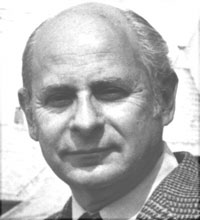Getting Started in Arithmetic
By Sam Blumenfeld
Printed in Practical Homeschooling #41, 2001.
 Mr. Blumenfeld kicks off a new column on how to tutor, by tracing the history of arithmetic.
Mr. Blumenfeld kicks off a new column on how to tutor, by tracing the history of arithmetic.

|
 |
 Anyone who wants to teach a child arithmetic should first know something of its history. Arithmetic is the most ingenious counting system ever invented by man and probably the greatest single intellectual achievement of the human race. Neither the computer nor the space age could have been possible without it. That information alone should create the kind of excitement in the teacher that could excite the learner as well. If a child becomes excited about arithmetic, chances are he or she will want to master it well. The reason why so many children develop an antipathy toward arithmetic and math in general is because of how the subject is taught to begin with.
Anyone who wants to teach a child arithmetic should first know something of its history. Arithmetic is the most ingenious counting system ever invented by man and probably the greatest single intellectual achievement of the human race. Neither the computer nor the space age could have been possible without it. That information alone should create the kind of excitement in the teacher that could excite the learner as well. If a child becomes excited about arithmetic, chances are he or she will want to master it well. The reason why so many children develop an antipathy toward arithmetic and math in general is because of how the subject is taught to begin with.
What makes arithmetic so remarkable is that it is a counting system that uses only ten abstract symbols with which to perform all of its functions. We call it the decimal, place-value system because it incorporates the idea of place value which makes calculation easier than any system that preceded it.
The earliest counting systems relied entirely on concrete objects, such as pebbles, for keeping track of quantity. In fact the word calculate is derived from the Latin calx, meaning pebble.
Like our sound-symbol alphabetic writing system, our decimal place-value system is the product of a very long development in which man tried to find the best mental tools with which to express the great intellectual potential he had within him. But while the alphabet permitted man to make remarkable literary and philosophical advances, including the writing of the Holy Scripture, there was no advance in calculation methods for five thousand years.
The Greek system, called logistic, consisted of 27 symbols: the first nine letters of the Greek alphabet representing 1–9; the next nine representing tens, 10–90; and the next nine representing hundreds; 100–900. Thus the number 526 required a symbol for 500, a symbol for 20, and a symbol for 6. The symbols, regardless of their arrangement, all added up to 526. However, in our place-value notation 526 is five hundred twenty six, not 13.
It was the Hindus of India in around 500 A.D. who came up with the place-value idea. It was derived from their counting board, which consisted of columns. The far right column was for ones, the column immediately to the left was for tens, the next column to the left was for hundreds, etc. They originally used nine notations or signs to stand for quantities. The sign for zero had not yet been invented. Thus, if you had 6 pebbles in the ones column, 2 pebbles in the tens column, and 5 pebbles in the hundreds column, the notation was 526 – five hundred twenty six. But what did you do if you had an empty column? Supposing, for example, the tens column had been empty? Did they write 5-6 to represent five hundred six? Apparently they did until someone invented the sign for zero, permitting them to write 506.
The invention of zero, a true stroke of genius, is probably the greatest single mental invention in all of human history. Without it, our counting system would have never been able to perform all of the functions it does so easily and efficiently. Without it we could never have developed modern science, industry and commerce. That’s how important so small an invention as zero has been for the human race. We don’t know who invented it. What we do know is that this invention permitted man to go from the agricultural age to the computer age in a very short span of time.
In light of all this exciting history, one wonders how teachers in the past have managed to make learning arithmetic dull and dreary, synonymous with drudgery. But not only is arithmetic not dull, it also must be learned because it is needed in order to survive in our society.
Whenever I lecture on this subject, I always ask how many people in the audience use calculus frequently. Perhaps one hand will go up. I then ask, how many use trigonometry frequently. Maybe one hand will go up. I then ask, how many use geometry or algebra frequently. A hand or two will go up. But then I ask, how many here use arithmetic frequently? And all hands go up.
What does this mean? It means that every child must learn arithmetic. The trick is to make arithmetic interesting, compelling, and easy. We shall discuss how to do that in future columns.